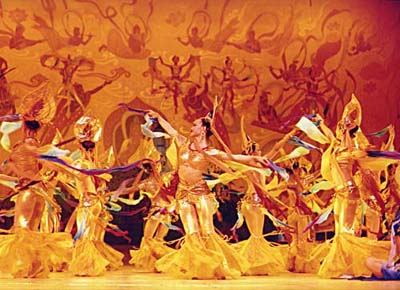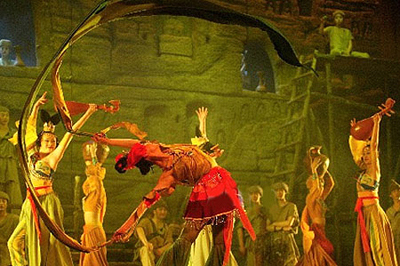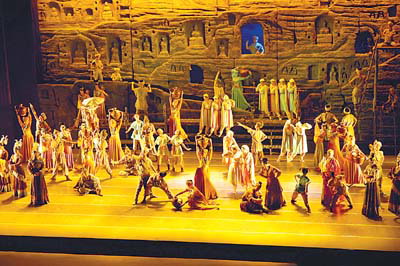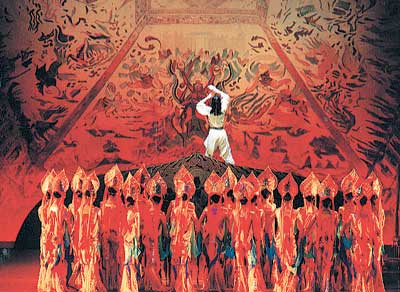| Tools: Save | Print | E-mail | Most Read |
| Buddha's Cave Inspires Dance Party |
| Adjust font size: |
The Caves of 1,000 Buddhas have always been a popular tourist destination. Formally known as the Dunhuan Mogao Grottoes, they are located at the base of Mingsha Mountain, 25 kilometers southeast of Dunhuang City in Northwest China's Gansu Province. The Mogao Grotto, which was built in 366 AD and constructed through 10 dynasties, has become the inspiration for many works of art. Now it has inspired a four-act dance Great Dream of Dunhuang Grottoes, which will be staged at the Poly Theatre from November 28 to 30. The full-length dance features the rich flavour of the ancient Silk Road, shown through its choreography, music, costume and setting. Having won wide acclaim from the audience and critics in China since Lanzhou Song and Dance Company premiered it in Beijing in 2000, the production will soon tour overseas. In January, the company will give eight shows at the Theatre de la Bastile. Then it will also tour Austria and Spain for 36 shows. The dance follows the stories behind the amazing ancient murals kept at the Dunhuang Grottoes and of the talent of the artists who painted the murals and their hard work. Choreographer Chen Weiya was inspired by the dance idioms featured on the ancient murals kept at the grottoes. The pas de deux of Mo (by Liu Zhen) and Yueya (by Tian Qing) displays high-level techniques of Chinese dance as well as strong emotion. "I not only tell a love story, but also provide those who have never been to Dunhuang a glimpse of its splendid art and culture," says Chen, the artistic director of the China National Oriental Song and Dance Company.
(Xinhua News Agency November 25, 2006)
|
| Tools: Save | Print | E-mail | Most Read |
 |
| Related Stories |






